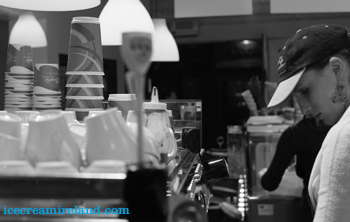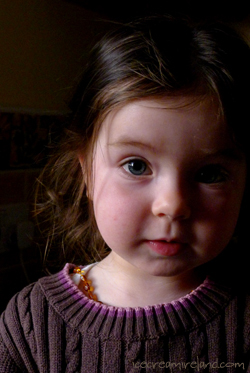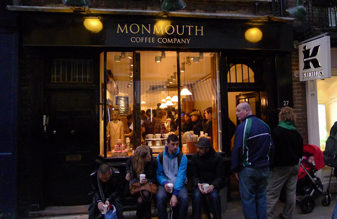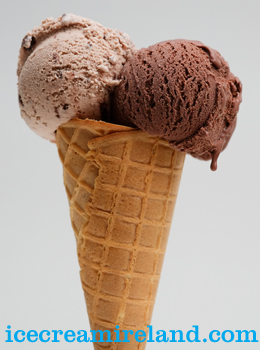The creative team in our Killarney shop put this together for your viewing pleasure! 🙂
Videos, Photos
Fuji X Pro 1 – Close, but…
I needed to take some photos in Dublin, and my camera gear is in Kerry, so I went into the lovely folks at Conn’s Cameras, asking to rent a Nikon D700. All were out, so I inquired if there was any chance they’d rent me the new Fuji X Pro 1.
There’s been a lot of buzz around this camera, and I was dying to get my hands on it. For me, a lighter, smaller camera that takes great shots and manages low light has been something I’ve been waiting for ages to materialize. An all around camera – something to shoot ice cream and people – good quality but not exactly a Leica M9 (way beyond my budget).
Somehow, with all of the advances with digital cameras, there’s still the same old thing – compacts that don’t quite deliver the quality (usually due to small sensors and limitations on lens quality) and bulky DLSRs. Could this be the one?
Conn’s rented me one straight out of the box, and I walked out with the camera and all the lenses. Here’s the first shot I took, at night in our fairly dark Wicklow St. shop:

It’s a 16 megapixel camera, and advances in sensors leads them to claim that it’s equivalent to a full frame camera in quality. In addition, Fuji is known for making lenses (especially for cinema), and the camera comes with three – an 18mm, a 35mm, and a 60mm macro. They all have old-school aperture rings, which I love. I used the 60mm for this shot of ice cream:
Here’s a crop of the same shot:
Here’s a shot of a nut tart, taking within minutes of taking the camera out of the box, shot at 800 ISO:
So far so good. The picture quality is indeed great.
So,I headed outside to see if the speed of the camera is as much of an issue as people say, especially in low light. It is. Although the color and lack of grain in the below photo is amazing for near dark (shot at 3200 ISO), the 18mm lens had real trouble getting a focus lock. I shot a few, and none of them were perfectly sharp.

On the other hand, if you have a stationary target and lots of time to focus, it can deliver fine photos, even with very low light:
Do not buy this camera if you are the impatient sort. If you want to auto bracket exposure or take a burst of three shots, the camera stops to write them to disk, freezing up the digital viewfinder, long enough to drive me crazy. In addition, the lenses spend far too much time hunting for focus – especially bad on the 60mm.
Another downside is that the battery isn’t especially great, and I couldn’t find any meter that shows that the camera is about to die, which it does all of a sudden without a chance to take another shot.
Finally, I’ve found a bit of odd ghosting – the following shot was done in natural light on a cloudy day, and even the lens hood couldn’t stop the brownie being haunted:
So, for me, while there is lots to love about the camera, it’s not there yet. At €3000 for the camera and lenses, it’s not cheap, and as such it would have to perform better for me. I commend Fuji for their innovation, and I’ll be hoping the X pro 2 is the camera that finally puts it all together, but this baby will be returned as scheduled.
Technorati tags: digital, camera, Fuji, x-pro 1, lens, photography, review
Leica D-Lux 5 Review
 I promised a little while back that I’d let you know how I was getting on with the Leica D-Lux 5, and I’ll finally get around to it here.
I promised a little while back that I’d let you know how I was getting on with the Leica D-Lux 5, and I’ll finally get around to it here.
I don’t think there’s any point for me to go into the technical stuff, since you’d find that readily on the web. Rather, I’ll simply give my impressions and a few examples and hope it’s of some help. After all, I’m not a pro – it’s just my opinions!
 First of all, I’ll state the negatives, starting with the obvious: it’s a compact camera, and so there are limitations that come along with that – especially from the small lens and small sensor. Although most images are good enough to use, there are times where there is more pixelation than with my Nikon D300, and the pixelation is a bit rougher. You also don’t have the same sense of depth of field as with a longer lens.
First of all, I’ll state the negatives, starting with the obvious: it’s a compact camera, and so there are limitations that come along with that – especially from the small lens and small sensor. Although most images are good enough to use, there are times where there is more pixelation than with my Nikon D300, and the pixelation is a bit rougher. You also don’t have the same sense of depth of field as with a longer lens.
It’s also not as speedy – no firing of lots of frames per second. However, it’s much faster than my previous D-Lux 2, which was hardly usable on anything that wasn’t stationary, and I haven’t found it too slow.

Now the positives. First – it’s light, tight, and tidy. After bringing it to Venice and elsewhere, it’s getting harder and harder to convince myself to drag out the big camera and heavy lenses. You can have it in your coat pocket, just in case you see something interesting.
Next, the colour rendering is absolutely fantastic, especially in tricky light situations. This camera consistently delivers the closest colours to what my eyes see of any digital camera I have laid my hands on. In the photo above of Róisín, that’s exactly how she looked and how the colours looked. It was a tricky enough shot for most cameras – a dark kitchen with the last evening light coming in from a nearby window.
 Another example is this photo I took of Monmouth Coffee in London, just after dark. It captures the cold streetlight outside, and the warm glow inside. That’s exactly how it looked, and I didn’t fiddle with settings – I just snapped a shot. It’s a situation most cameras would find a bit of a struggle.
Another example is this photo I took of Monmouth Coffee in London, just after dark. It captures the cold streetlight outside, and the warm glow inside. That’s exactly how it looked, and I didn’t fiddle with settings – I just snapped a shot. It’s a situation most cameras would find a bit of a struggle.
Another big plus is how it handles low light – it has a 2.0-3.3 lens that’s a vast improvement over previous models, and they’ve improved the software as well. It delivers usable shots up to 1600 ISO.
 It also does extremely well in contrasty situations. In the photo on the right, the main light source in this darkish London cafe was the window directly behind Manuela and Cara. Not only did the camera keep their faces bright enough, but it managed to deliver excellent colour and even keep the detail outside in the primary light source. My Nikon would not have managed that. Either the window would have been blasted out white, or the faces would have been dark or both. You’d never know, looking at the shot, how dark it was inside.
It also does extremely well in contrasty situations. In the photo on the right, the main light source in this darkish London cafe was the window directly behind Manuela and Cara. Not only did the camera keep their faces bright enough, but it managed to deliver excellent colour and even keep the detail outside in the primary light source. My Nikon would not have managed that. Either the window would have been blasted out white, or the faces would have been dark or both. You’d never know, looking at the shot, how dark it was inside.

There’s been lots of discussion on the web (and indeed among photographers I know) whether it makes sense to fork out more for the Leica brand when the Panasonic LX5 is identical in terms of hardware, including the lens (Leica is owned by Panasonic). The only difference appears to be the software – how the cameras render an image. That might seem a small difference, but to me the feel of a photo is worth quite a bit.
My father has the Panasonic LX3, and I haven’t found the images comparable to either the D-Lux 5 or my previous D-Lux 2 (and both of us are simply happy snappers, not professionals, so it really seems to be the software). The photo of Declan on St. Patrick’s Day is a good example – I just snapped it off, but it has a nice mood to it.
 Which brings me to the black and white settings and processing, which are great. With past cameras, I’ve shot colour and converted it to black and white in Photoshop. With this camera, I’ve been using its black and white option quite regularly with good results. One of the nicest features of the camera is that you can set it to fire a burst of three shots that you set differently – at the moment I have it set for colour, black and white and black and white high contrast. So this last photo of Róisín was shot in a burst with the colour one at the top of this post. It’s a feature I love!
Which brings me to the black and white settings and processing, which are great. With past cameras, I’ve shot colour and converted it to black and white in Photoshop. With this camera, I’ve been using its black and white option quite regularly with good results. One of the nicest features of the camera is that you can set it to fire a burst of three shots that you set differently – at the moment I have it set for colour, black and white and black and white high contrast. So this last photo of Róisín was shot in a burst with the colour one at the top of this post. It’s a feature I love!
Anyway, I can recommend this camera to anyone who loves photography but doesn’t want to lug around heavy kit. It’s very expensive for a compact, but I think it delivers value, since although you won’t get the quality of a good SLR with good lenses, it’s reasonably close for most purposes and costs a whole lot less.
Technorati tags: digital, camera, Leica, d-lux 5, Nikon, photography
The Groaning of The Credit Card
 I’m off to London and then Venice for a little break (Manuela’s uncle has an empty apartment there and flights worked out at €6, including taxes 🙂 ).
I’m off to London and then Venice for a little break (Manuela’s uncle has an empty apartment there and flights worked out at €6, including taxes 🙂 ).
Although my credit card is a bit strained, I couldn’t stop myself buying the above D-Lux 5, which has come down in price, for the trip. Although I love my Nikon, I’m getting tired of lugging it around.
I’ll let you know how I get on, and if it was worth the money. If this little Leica can’t take good pictures in Venice, the most beautiful of cities, it truly will have been a bad buy!
Áine, Photographer
My niece, Áine, is in Ireland, and she has brought with her a seriously old-fashioned, fully manual camera, a 1978 Exa 1, which were manufactured in Dresden. She’s shooting black and white film, and in the age of digital images, her photos do capture a mood that I miss. Below are: 1. Áine in the Dingle shop 2. Ailish 3. Claire making coffee 4. My nephew Ryan with my mother in the background. I think she’s showing talent!

Photos courtesy of Áine Goodman.
Wonderful, Fun Holiday
One of the nicest things about having a shop is that a day is often full of surprises, since you never really know who will walk in the door. This video shows the day’s best surprise – a family who had a song about their West Kerry holiday, and their little boy performed the song for me, since it featured our ice cream and waffles in our seasonal Tig Aine shop.
I’m still smiling…
Hands Off My Sundae!
 The other day, I was taking photos of sundaes in the shop, and I’m quite proud of the one above. Then, Róisín arrived with her mother, and things got messy quickly.
The other day, I was taking photos of sundaes in the shop, and I’m quite proud of the one above. Then, Róisín arrived with her mother, and things got messy quickly.
I think the following series tells the story:



It must be said that Róisín didn’t have any interest in eating it, but never underestimate how much fun it is to stick your fingers in cream!
I Just Can’t Help Myself
 I know I should get back to the business of blogging about ice cream, chocolate, coffee, etc., but after another day spent in the maternity ward with our new baby, I just can’t help posting some more photos. I do promise this will not turn into a baby blog (although I can’t promise Róisín won’t make the odd appearance!)
I know I should get back to the business of blogging about ice cream, chocolate, coffee, etc., but after another day spent in the maternity ward with our new baby, I just can’t help posting some more photos. I do promise this will not turn into a baby blog (although I can’t promise Róisín won’t make the odd appearance!)





















